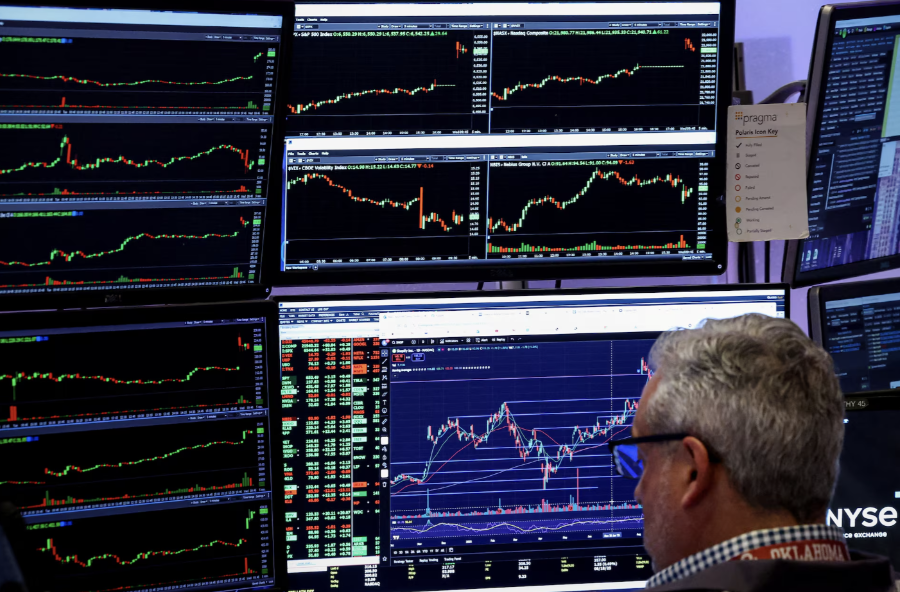US stocks rose on Thursday as investors bet that the latest inflation data would not prevent the Federal Reserve from cutting interest rates next week.

Oil prices fell after several consecutive sessions of gains due to concerns about a glut, although they continued to be supported by the risk of supply disruptions due to geopolitical tensions.
At the close, the Dow Jones Industrial Average rose 617.08 points, or 1.36%, to 46,108. The S&P 500 gained 0.85% to 6,578.47. The Nasdaq Composite added 0.72% to 22,043.07. All three indexes set intraday records and closed at all-time highs.
The Labor Department’s August consumer price index (CPI) report released Thursday painted a mixed picture of prices. The index rose more than expected month-over-month, but in line with expectations year-over-year.
The CPI rose 0.4% in August from July, beating the 0.3% increase forecast by economists surveyed by Dow Jones. It rose 2.9% year-over-year in 2024, matching the forecast. The core CPI, which excludes food and energy prices, rose 0.3% in August and 3.1% year-over-year, both in line with forecasts.
On Wednesday, another inflation report from the US Labor Department showed the producer price index (PPI) unexpectedly fell 0.1% in August from July.
Meanwhile, the US labor market continues to show signs of slowing, as evidenced by a sharp increase in the number of people filing for unemployment benefits each week. The US Department of Labor reported that in the week ending September 6, the number of people filing for unemployment benefits increased by 27,000 to 263,000, the highest level since October 2021 and higher than the forecast of 235,000.
Earlier this week, revised data from the US Bureau of Labor Statistics showed that the number of new jobs created in the one-year period ending in March 2025 was down 911,000 jobs from the previous release.
All of this data reinforces the view that the world’s largest economy is weakening and that the Fed will cut interest rates at its meeting on September 16-17. This interest rate expectation has been the driving force behind the major US stock indexes hitting records in recent sessions.
Reflecting expectations of lower interest rates, US Treasury yields fell after the US economic statistics reports were released on Thursday. The yield on the 10-year US Treasury bond fell to 4%.
“A quarter-point rate cut by the Fed next week is a certainty, and today’s economic reports still leave room for a half-point cut, especially the jobs numbers. The thing to watch now is the 10-year yield. If it falls to 3%, stocks could continue to rally from here,” Jay Woods, chief strategist at Freedom Capital Markets, told CNBC.
Traders in the interest rate futures market are pricing in a 95% chance of a 25 basis point rate cut at the Fed’s next meeting, and a 5% chance of a half-point cut, according to the CME’s FedWatch Tool. Bets on an October rate cut rose to 86% from 74% the day before, and the probability of a second cut in December rose to 79% from 68%.
“It seems like the market is focused on the labor market weakness. That weakness is a signal that the Fed may be about to start a new rate-cutting cycle. After next week, the market’s focus will be on both inflation and the labor market,” Mona Mahajan, chief market strategist at Edward Jones, told Reuters.
In the energy market, Brent crude oil futures in London fell $1.12/barrel, or 1.66%, to close at $66.37/barrel. WTI crude oil futures in New York fell $1.3/barrel, or 2.04%, to close at $62.37/barrel.
The International Energy Agency (IEA) said in its monthly report that global oil supplies will rise more than expected this year as OPEC+ continues to increase production. OPEC+ is an alliance between the Organization of the Petroleum Exporting Countries (OPEC) and some non-members including Russia.
Meanwhile, a monthly report from OPEC, released after the IEA report, kept its forecast for non-OPEC oil supply and global oil demand in 2025 unchanged, saying oil demand was firming.
“Oil prices are reacting to the IEA’s forecast that the market will be oversupplied next year,” said Commerzbank analyst Carsten Fritsch.
The oil market is torn between the risk of potential supply disruptions due to tensions in the Middle East and Ukraine, and the actual increase in supply due to increased production by OPEC+ and rising inventories, according to Tamas Varga, an analyst at PVM Oil Associates. The US and the European Union (EU) discussed new sanctions against Russia this week to force it to end its war with Ukraine.
Analyst Ole Havalbye of SEB Research also shares the view that the global oil market may have a surplus of oil entering 2026, but forecasts that oil demand will be stable and can absorb the additional oil production from OPEC+.
Source: vneconomy.vn















Leave a Reply